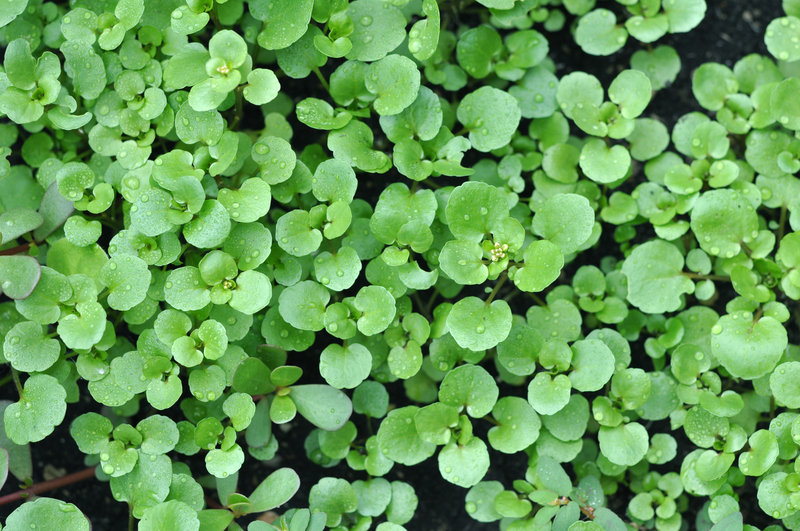New to Lawn Care? Here's How to Get a Picture-Perfect Yard
Dreaming of a lush, green lawn but not sure where to start? You're not alone! Whether you're a first-time homeowner or have finally decided to give your yard some love, our comprehensive guide will walk you through everything you need to know to create and maintain a beautiful, envy-worthy lawn. In this article, you'll find expert advice on grass selection, essential maintenance routines, troubleshooting common lawn problems, and the best tools and techniques for beginners and beyond. Let's dive in and transform your outdoor space!
Understanding Your Lawn: The Foundation of a Gorgeous Yard
Before you grab your mower or start scattering seeds, understanding the unique characteristics of your yard is crucial. Each lawn is different, influenced by soil type, climate, sunlight, and even local pests. Here's how to assess your garden's needs:
- Soil Type: Sandy, clay, loamy, or silty - knowing your soil determines what grass will thrive.
- Sunlight: Full sun, partial shade, or mostly shaded areas impact grass growth.
- Climate: Warm, cool, or transitional climate zones require different grass species.
- Drainage: Good drainage prevents standing water and root rot.
- pH Levels: Test your soil pH. Most grasses prefer neutral to slightly acidic soil.
Tip: You can purchase a simple soil test kit from your local garden center to check your soil type and pH.

Choosing the Ideal Grass for a Picture-Perfect Yard
Picking the right grass variety is the cornerstone for a picture-perfect lawn. The best choice depends on your climate and expected lawn usage. Here are some popular types:
Cool-Season Grasses
- Kentucky Bluegrass: Offers brilliant color and dense growth, excellent for northern climates.
- Fescue: Adaptable and shade-tolerant, thrives with foot traffic.
- Ryegrass: Fast to establish, great for overseeding in cooler months.
Warm-Season Grasses
- Bermudagrass: Durable and heat-tolerant, ideal for southern lawns.
- Zoysiagrass: Dense, slow-growing, and weed-resistant.
- St. Augustine: Does well in coastal, humid areas with partial shade.
If you're uncertain, ask local lawn care experts or your cooperative extension office for grass varieties that flourish in your region.
Lawn Establishment: Starting from Seed or Sod
Once you've selected your grass, it's time to bring your vision to life! When establishing your new lawn, you have two main options: seed or sod.
Seeding Your Lawn
- Cost-effective and offers a large selection of grasses.
- Ideal for: Large areas and patient homeowners.
- Requires more time and attention to watering and weed control.
Installing Sod
- Instant green results; perfect for quick transformations.
- Higher cost but less risk of weeds.
- Best planted during the growing season for your grass type.
Preparation Steps for Both Methods:
- Clear the area of old grass, weeds, rocks, and debris.
- Loosen the top 2-3 inches of soil and level the area.
- Amend soil with compost or fertilizer, if needed.
- Apply seed or lay sod as instructed for your chosen grass variety.
- Water thoroughly after installation.
Remember: Early care is essential. Keep the soil moist for seeds, and avoid heavy foot traffic on new sod.
Lawn Care Basics: Maintenance Made Simple
Getting a great lawn isn't a one-time affair - but routine lawn maintenance doesn't need to be complicated. Here's a simple schedule you can follow:
Mowing Your Way to Perfection
- Mow regularly: Never remove more than one-third of the grass blade at a time.
- Keep blades sharp: Dull blades tear grass and encourage disease.
- Alternate mowing patterns: Prevent ruts and uneven growth.
Optimal mowing height depends on your grass type, but most lawns thrive when kept around 2-3.5 inches tall.
Watering: The Lifeblood of a Healthy Lawn
Proper irrigation is a game-changer for lush, green lawns:
- Water deeply and infrequently for deep root growth--aim for 1-1.5 inch per week.
- Early morning is the best time to maximize absorption and minimize disease.
- Use a rain gauge or tuna can to track your watering efforts.
Fertilizing for Green Goodness
- Spring and fall are usually the best times to fertilize lawns.
- Choose a fertilizer that matches your grass type and soil test results.
- Don't over-fertilize - this can cause rapid growth, thatch, and environmental harm.
Aeration & Thatch Management
- Aerate your lawn once a year, typically in the fall or spring, to relieve soil compaction.
- Remove excess thatch (a layer of dead grass and roots) to help water and nutrients reach roots efficiently.
Weed, Pest, & Disease Control
- Healthy lawns outcompete most weeds and resist pests naturally.
- Remove weeds by hand or use spot treatments with herbicide (follow directions carefully).
- Treat pests and diseases at the first sign. Early identification is key!
Organic options are available for those seeking sustainable and eco-friendly yards.
Troubleshooting Common Lawn Problems
Even the best-tended lawns face challenges. Here's how to fix common issues so your yard stays picture-perfect:
Dealing with Bare Spots
- Rake the area to remove debris and loosen soil.
- Apply seed or patch mix, gently press down, and water well.
- Keep the area moist until new growth appears.
Combating Weeds
- Mow high to shade out weed seedlings.
- Apply pre-emergent herbicide in early spring if you have annual weed problems.
- For aggressive perennial weeds, spot treat as soon as you notice them.
Patching Thin or Yellow Grass
- Check watering and mowing practices--over- or under-watering can cause thinning.
- Test soil for nutrient deficiencies and amend as needed.
- Reseed or overseed in fall or spring for a thicker lawn.
Pests and Grubs
- Brown patches or loose turf could be signs of grub damage.
- Apply insect control solutions, but read labels to avoid harming beneficial insects.
- Encourage natural predators, like birds and beneficial nematodes.
Essential Tools for Easy Lawn Care
The right tools can make all the difference for beginners and seasoned gardeners alike. Here's a starter kit for success:
- Lawn Mower: Manual reel or gas/electric mower based on lawn size and preference.
- String Trimmer: For edging and hard-to-mow spots.
- Rake: Essential for clearing leaves, thatch, and debris.
- Hose/Sprinkler System: For consistent, even watering.
- Spreaders: For evenly applying seed and fertilizer.
- Aerator: Optional but highly effective for soil health.
- Gloves and Safety Gear
As you gain experience, consider investing in higher-quality equipment for convenience and better results.
The Lawn Care Calendar: When to Do What
Timing is everything in lawn care! Follow this basic yearly schedule to maximize growth and resilience:
- Early Spring: Clean up debris, test soil, aerate/cultivate, fertilize, and overseed if needed.
- Late Spring: Regular mowing, weed control, continued fertilization.
- Summer: Deep watering, higher mowing heights, monitor for pests and diseases.
- Early Fall: Fertilize and overseed, keep mowing, rake leaves, aerate if needed.
- Late Fall: Lower mowing height for winter, clear all debris, plan for spring improvements.
- Winter: Avoid foot traffic on frosty grass, service equipment, plan for next season.
Advanced Tips for a Jaw-Dropping Lawn
Once you've mastered the basics, try these expert techniques for a truly standout yard:
- Edging: Create crisp lines along walkways and beds for major curb appeal.
- Lawn Stripes: Alternate mowing direction or use a striping kit for that professional ballpark look.
- Mulching Mower: Recycle clippings back into your lawn for natural nutrition.
- Nutrient Management: Use slow-release fertilizers and customized soil amendments.
- Smart Irrigation Systems: Automate watering and save time and water.
- Eco-Friendly Practices: Compost lawn clippings, reduce chemical use, and encourage pollinators.

Frequently Asked Questions About Lawn Care
How often should I mow the lawn?
During the growing season, aim to mow once a week. Adjust frequency as growth slows in heat or cool.
How much should I water my grass?
Most lawns need about 1 to 1.5 inches of water per week, either from rainfall or irrigation.
What's the best way to fight lawn weeds?
Promote thick, healthy turf through proper mowing and fertilizing. Spot treat weeds as soon as they appear.
Why is my grass turning yellow?
This could be due to overwatering, compacted soil, nutrient deficiency, or pests. Investigate and address quickly for best results.
Conclusion: Lawn Care for Beginners Leads to a Perfect Yard
From assessing your soil and grass type to mastering mowing, watering, and fertilizing routines, you now have the knowledge to transform your yard into a suburban showpiece. Be patient--a truly picture-perfect lawn takes time and consistent care. As you gain confidence and experience, you'll discover that lawn maintenance doesn't have to be overwhelming or intimidating.
Enjoy the process, celebrate each small victory, and remember: Every lawn is unique. With the right approach and a bit of dedication, you'll have a lush, green lawn that's the envy of the neighborhood. Happy gardening!
Want to keep your yard looking its best all year? Bookmark this guide or share it with fellow homeowners who are new to lawn care!